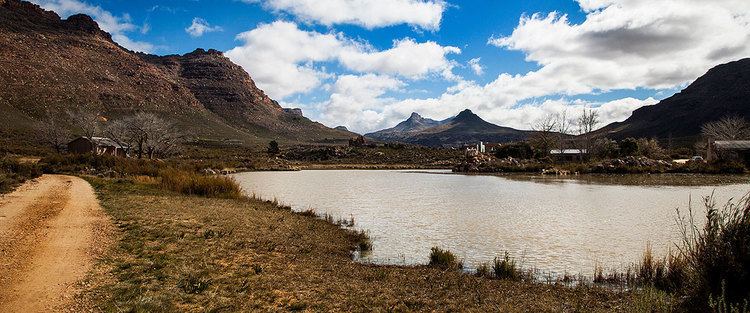Country South Africa Seat Clanwilliam Time zone SAST (UTC+2) Area 8,007 km² Black african population 12.7% Native english speakers 1.9% | Wards 6 Municipal code WC012 White population 11% Native afrikaans speakers 88.7% | |
 | ||
Points of interest | ||
Cederberg Local Municipality is a local municipality which governs an area of the Western Cape province of South Africa stretching from the Cederberg mountains through the middle valley of the Olifants River to the Atlantic coast. It includes the towns of Clanwilliam, Citrusdal and Lamberts Bay, and the surrounding villages and farms. As of 2011 it had a population of 49,768. It is located within the West Coast District Municipality and has municipality code WC012.
Contents
Map of Citrusdal, South Africa
Geography
The municipality covers a total area of 8,007 square kilometres (3,092 sq mi), stretching from the Atlantic Ocean in the west to the Doring River in the east. The Olifants River flows from south to north through the center of the municipal area. The Cederberg mountains rise from the eastern bank of the river. To the west of the river are lower ranges of hills descending to the coastal plain. The municipality abuts on the Matzikama Municipality to the north, the Hantam Municipality to the east, and the Witzenberg and Bergrivier Municipalities to the south.
According to the 2011 census the municipality has a population of 49,768 people in 13,513 households. Of this population, 75.7% describe themselves as "Coloured", 12.7% as "Black African", and 11.0% as "White". The first language of 88.7% of the population is Afrikaans, while 5.0% speak Xhosa, 2.5% speak Sotho and 1.9% speak English.
The principal towns of the municipality are Clanwilliam (pop. 7,674) and Citrusdal (pop. 7,177) in the Olifants River valley, and Lambert's Bay (pop. 6,120) on the coastline. There are smaller agricultural settlements at Graafwater (pop. 2,261) and Leipoldtville (pop. 298), and a coastal village at Elands Bay (pop. 1,525).
Politics
The municipal council consists of eleven members elected by mixed-member proportional representation. Six councillors are elected by first-past-the-post voting in six wards, while the remaining five are chosen from party lists so that the total number of party representatives is proportional to the number of votes received. In the election of 3 August 2016, the Democratic Alliance (DA) won a majority of seats on the council, defeating the ANC, which previously had a majority.
The following table shows the results of the 2016 election.
The local council sends two representatives to the council of the West Coast District Municipality: one from the ANC and one from the DA.
